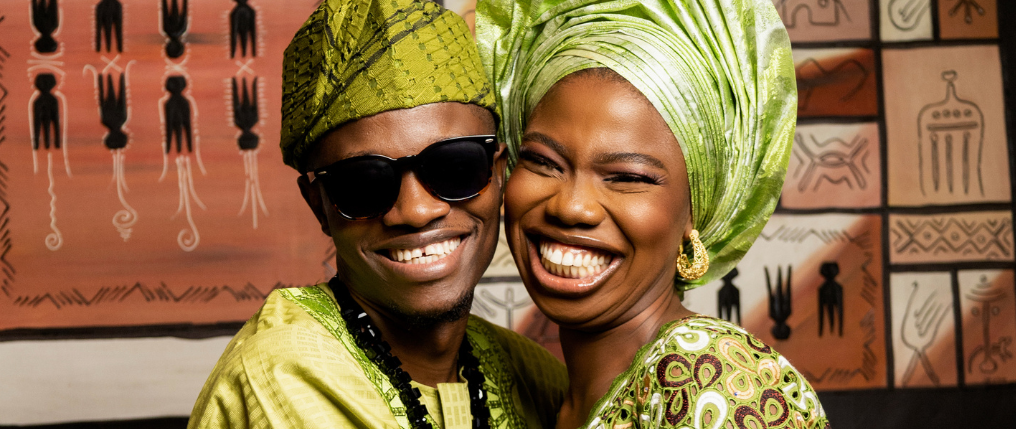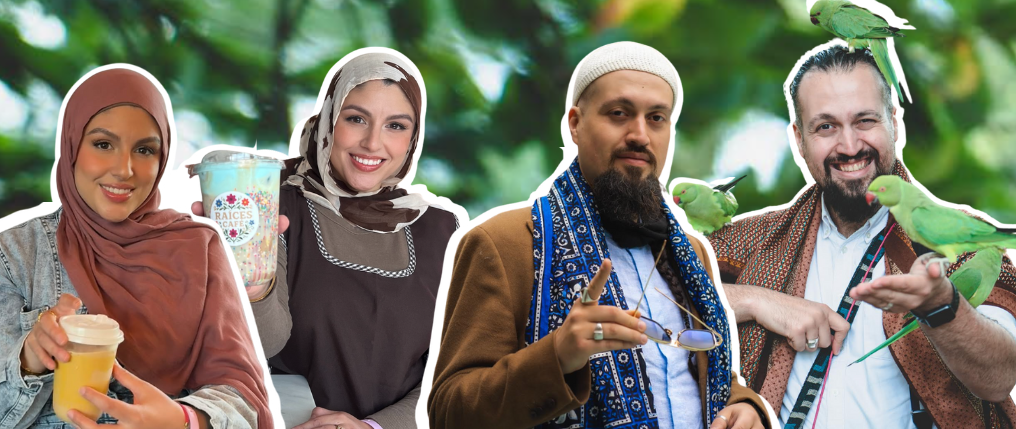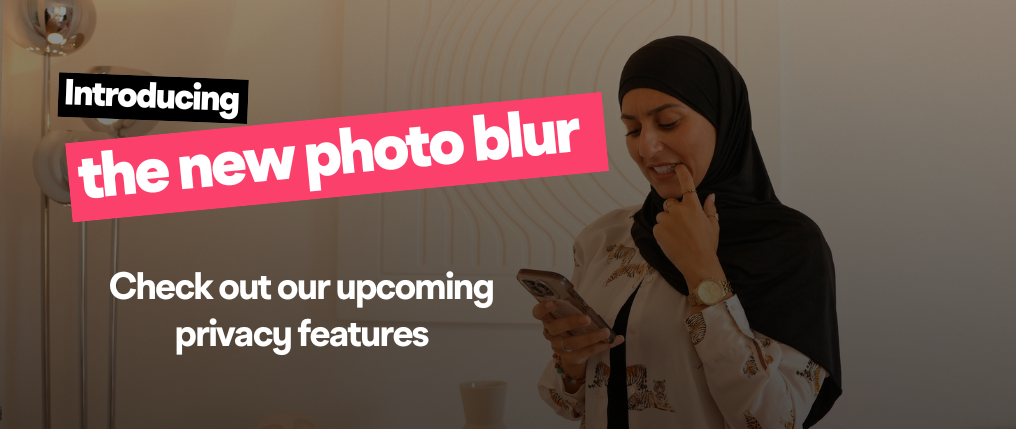
Attending a Henna party as a guest? Here’s your essential guide
November 7, 2023
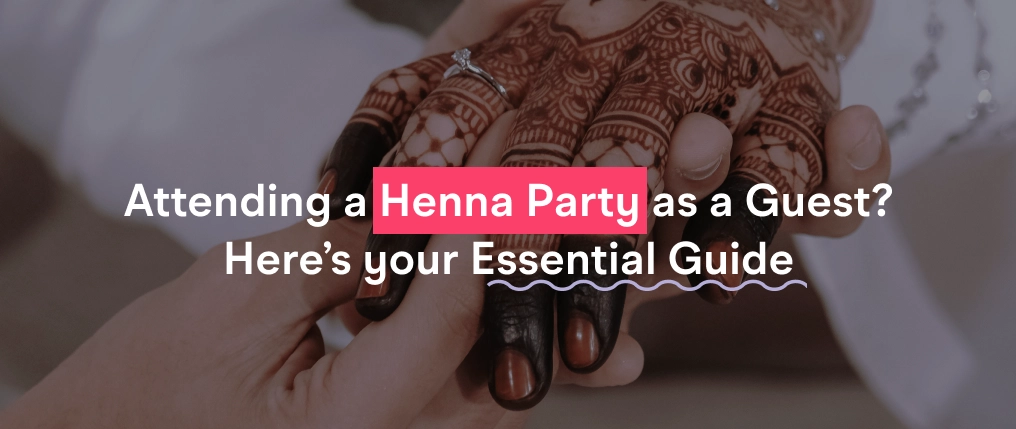
If you’ve received an invitation to a Henna party, also known as a Mehndi party, you’re in for a delightful cultural experience that’s deeply cherished among Muslims.


Looking for your soulmate?
You won’t find your soulmate on this blog post but you might find them on Muzz - the world’s biggest Muslim dating and marriage app.
These gatherings are not just about intricate henna designs; they’re celebrations of love, unity, and the blessings that come with embarking on the journey of marriage.
To help you make the most of this special occasion, we’ve put together an essential guide for guests attending a Henna party.
Table of contents:
What is a Henna party or Mehndi party?
The history and significance of the Henna party
What happens at a Henna party?
What are some of the Henna decorations?
What to wear to a Henna party as a guest?
Do I bring a gift to a Mehndi party?
What time should I arrive at a Mehndi party?
What is a Henna party or Mehndi party?
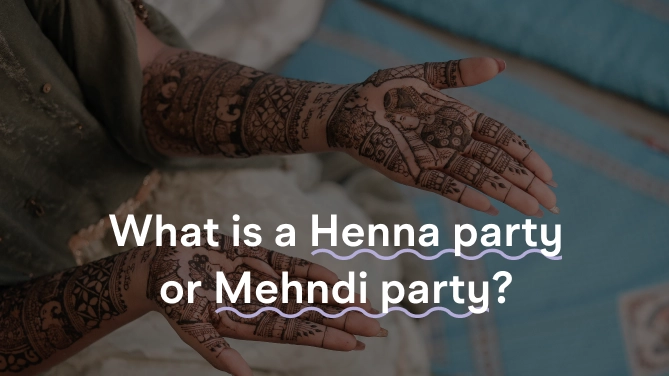
A Henna party or Mehndi party is a joyous pre-wedding celebration deeply rooted in Muslim culture. It’s a lively and colourful gathering held before the wedding ceremony, primarily among South Asian and Middle Eastern Muslim communities.
Related content: The complete guide to a Muslim wedding
During a Henna party, the bride-to-be, her close female friends, and family members come together to apply intricate henna designs on their hands and feet. Henna, a natural dye derived from the henna plant, is used to create beautiful temporary tattoos, symbolizing beauty, joy, and good luck.
The atmosphere at the party is filled with music, dancing, delicious food, and heartfelt conversations. It’s a time for bonding, sharing stories, and offering blessings to the bride for a happy and prosperous married life.
Related content: What to expect at an African wedding as a first-time guest
In addition to adorning the bride, guests also get henna designs, which vary in complexity and creativity. It’s a tradition that fosters a sense of unity and celebration within the Muslim community.
The history and significance of the Henna party

The history and significance of the Henna party hold deep cultural and religious importance in Muslim communities, especially in South Asia and the Middle East.
Historical Roots
Henna has been used for centuries in various cultures for decorative purposes. It’s believed that the tradition of applying henna as body art dates back to ancient Egypt and has been practised in many parts of the world. In Muslim culture, it became particularly popular as a way to celebrate special occasions and rituals.
Related content: 6 Egyptian wedding traditions worth knowing about
Pre-Wedding Celebration
The Henna party (Mehndi party) is most commonly associated with weddings. It usually takes place a day or two before the wedding ceremony itself. The bride and her female friends and family gather for this festive occasion. The primary focus is on adorning the bride with intricate henna designs on her hands and feet.
Symbolism and Blessings
Henna is considered a symbol of beauty and good luck. The intricate patterns often incorporate motifs representing love, joy, and fertility. The act of applying henna is not only a form of adornment but also a way to seek blessings for the bride’s journey into married life. It’s believed that the darker the henna stain on the bride’s hands, the stronger the bond between her and her husband.
Related content: What happens at an Arabic wedding
Cultural Variations
While the core tradition remains the same, there can be variations in how Henna parties are celebrated across different Muslim cultures. The designs, rituals, and even the timing of the event may vary.
What happens at a Henna party?

At a Henna party, also known as a Mehndi party, a series of meaningful and festive events take place, primarily revolving around the bride-to-be and her female friends and family.
Here’s what typically happens:
1. Henna Application: The highlight of the party is the application of detailed henna designs on the bride’s hands and feet. A skilled henna artist, often hired for the occasion, carefully decorates the bride’s skin with these temporary tattoos. This process can take a few hours, during which guests observe, socialize, and enjoy each other’s company.
2. Guests’ Henna: While the bride’s henna is being applied, guests, particularly close female friends and family members, also get henna designs on their hands or other parts of their bodies. These designs can range from simple patterns to more elaborate and artistic creations.
Related content: Exploring Walima: A detailed overview and guide
3. Music and Dancing: Henna parties are known for their lively and joyful atmosphere. Music, singing, and dancing are common elements of the celebration. Traditional and contemporary songs are played, and guests often join in for dance performances, creating a festive mood.
4. Mingling and Bonding: The party provides an opportunity for the bride and her guests to bond, share stories, and offer blessings and advice. It’s a time for intergenerational connections and female solidarity, fostering a sense of community.
5. Refreshments: Delicious food and refreshments are an integral part of the Henna party. Traditional dishes and sweets are served, ensuring that guests can enjoy a delightful culinary experience.
6. Symbolism and Blessings: Throughout the event, there’s a strong sense of symbolism and tradition. Elders may share stories and offer blessings for the bride’s future happiness and prosperity in her married life.
7. Gift-giving: It’s customary for guests to bring gifts for the bride, symbolizing their love and support for her as she embarks on her journey into marriage. These gifts can vary from sentimental items to practical ones.
Related content: 7 traditions to know before attending a Lebanese wedding
8. Dress and Decor: The venue is often beautifully decorated with vibrant colours, flowers, and traditional elements. Guests typically dress in modest and culturally appropriate attire, adding to the overall visual appeal of the event.
9. Henna Removal: After the henna has dried and set, it is gently scraped off, leaving behind a beautiful reddish-brown stain. This stain deepens over the next couple of days, symbolizing the bride’s connection to her future spouse.
What are some of the Henna decorations?

Henna decorations play a significant role in enhancing the beauty and symbolism of henna designs during special occasions like weddings and celebrations in Muslim culture.
Here are some common henna decorations:
1. Floral Patterns: Flowers are a popular choice in henna designs. Elaborate floral patterns, including roses, lotuses, and jasmine, are intricately woven into the henna design. These flowers symbolize beauty and love.
2. Peacock Motifs: The peacock is a common motif in henna artistry. Its majestic feathers are incorporated into designs, adding a touch of elegance and grace. Peacocks are also associated with beauty and splendour.
3. Vines and Leaves: Vines and leaves are often used to connect various elements of the henna design. They create a sense of continuity and harmony in the overall pattern.
Related content: Tunisian wedding: 7 days and nights of beautiful traditions
4. Geometric Shapes: Geometric shapes, such as circles, triangles, and squares, are sometimes integrated into henna designs. They can add a modern and symmetrical element to the patterns.
5. Bridal Hands: Some henna designs feature images of bridal hands, symbolizing the bride’s upcoming marriage. These hands may be adorned with rings or other jewellery.
6. Intricate Lattice Work: Lattice patterns, resembling delicate lacework, are often used to fill in spaces within the henna design. They add complexity and beauty to the overall look.
7. Mehndi Cones and Paisley Designs: Mehndi cones, which are traditional tools used to apply henna paste, may be included in the design. Paisley or mango-shaped motifs are also a classic feature of henna patterns, symbolizing fertility and good fortune.
8. Dots and Swirls: Tiny dots and swirling lines are used to fill gaps and add detail to the henna design. These small elements can make the overall pattern more intricate and captivating.
Related content: How to prepare a Moroccan wedding
9. Groom’s Name or Initials: Sometimes, the groom’s name or initials are hidden within the bride’s henna design, and he’s expected to find it. It adds an element of fun and anticipation to the tradition.
10. Traditional Symbols: Traditional symbols like the moon, stars, and hearts may be incorporated into the design, each carrying its own symbolism and significance.
11. Personalization: Henna designs can be personalized to reflect the bride’s and groom’s personalities or interests. For example, if they have a shared hobby or passion, it may be subtly woven into the design.
What to wear to a Henna party as a guest?

When attending a Henna party as a guest, it’s essential to dress modestly and respectfully, as is customary in Muslim culture.
Here are some guidelines to help you choose the right attire:
1. Women: Opt for conservative clothing that covers your arms, legs, and neckline. Traditional outfits like salwar kameez, abayas, or modest maxi dresses are excellent choices. Make sure your clothing is not too tight or revealing. You can add a touch of elegance with colourful and embellished garments, as Henna parties often have a festive ambience.
2. Colors: Vibrant and colourful clothing is often favoured at Henna parties, so don’t be afraid to wear lively hues. However, ensure that your outfit respects cultural norms and does not draw excessive attention.
Related content: Algerian wedding: 8 traditions you don’t want to miss
3. Accessories: Adorn yourself with tasteful accessories like bangles, earrings, or necklaces that complement your outfit. These can add a festive touch to your look.
4. Footwear: Wear comfortable and appropriate shoes for the occasion, such as flats or sandals for women, and closed shoes or dress shoes for men.
5. Headscarf (for women): If you choose to wear a headscarf (hijab), match it with your outfit and style it elegantly. It’s a respectful choice when attending Muslim events.
6. Check the Invitation: Sometimes, hosts may specify a dress code on the invitation. If so, be sure to follow any specific instructions provided.
Do I bring a gift to a Mehndi party?

Yes, it is customary to bring a gift when attending a Mehndi party (Henna party). Bringing a gift is a thoughtful way to show your love and support for the bride-to-be as she prepares for her wedding.
These gifts can vary, but they are often sentimental or practical items that the bride can use in her new married life.
Here are some gift ideas for a Mehndi Party:
1. Traditional Jewellery: Consider gifting the bride traditional jewellery pieces such as earrings, bangles, or a necklace. These adornments can be worn on special occasions and hold cultural significance.
2. Scented Oils or Perfume: Fragrances are a popular choice. High-quality scented oils or a bottle of perfume can be a thoughtful and appreciated gift.
3. Personalized Items: Personalized gifts like monogrammed towels, custom-made decorative items, or even a photo album filled with cherished memories can be meaningful presents.
4. Cash or Gift Cards: Giving cash or gift cards allows the bride to choose something she needs or desires. It’s a practical option that can be especially helpful for newlyweds.
Related content: Mahr in Islam – A Guide for Muslims
5. Kitchen Appliances or Cookware: Useful kitchen items like a blender, cookware set, or small appliances can be valuable gifts for a newlywed couple starting their life together.
6. Decorative Items: Decorative pieces like vases, wall art, or decorative cushions that match the bride’s style or the couple’s home decor can be a thoughtful addition to their new space.
7. Islamic Books or Art: If the bride and groom are religious, consider gifting them Islamic books, Quranic verses artwork, or calligraphy that can enhance their spiritual environment.
8. Cultural Items: Items that reflect the bride’s cultural heritage, such as traditional clothing, textiles, or artefacts, can also make meaningful gifts.
What time should I arrive at a Mehndi party?

When attending a Mehndi or Henna party, it’s essential to arrive on time to ensure you don’t miss any of the festivities. Typically, these events start in the late afternoon or early evening, but the specific timing can vary depending on cultural and regional customs.
As a general guideline, it’s a good idea to arrive about 15 to 30 minutes before the designated start time mentioned on the invitation. This allows you to offer your greetings to the host, engage in the initial socializing, and find a comfortable spot to settle in for the evening.
Remember that Henna parties can be lively and vibrant gatherings, and you wouldn’t want to miss any of the beautiful henna applications, music, dance, or the opportunity to spend time with the bride and other guests.
However, if the invitation specifies a different time or if you are unsure, it’s perfectly acceptable to reach out to the host or organizer in advance to confirm the precise starting time. This way, you can ensure you arrive promptly and fully enjoy the celebration.
Conclusion
As we conclude our guide on attending a Henna party (Mehndi party), we hope you now have a deeper understanding of the significance and beauty of this cherished tradition in Muslim culture.
These gatherings are not just about applying henna; they are a celebration of love, unity, and the blessings that come with the journey of marriage. Remember that your presence at a Henna party is a way to show your love and support for the bride, and it’s an opportunity to bond with friends and family while immersing yourself in the rich cultural heritage of these events.
Whether you’re a seasoned attendee or this is your first Henna party, embracing the customs and etiquette associated with these celebrations will ensure that you have a meaningful and enjoyable experience. From adorning yourself with modest yet festive attire to participating in the music and dance, you can contribute to the vibrant atmosphere of the event and create lasting memories.
